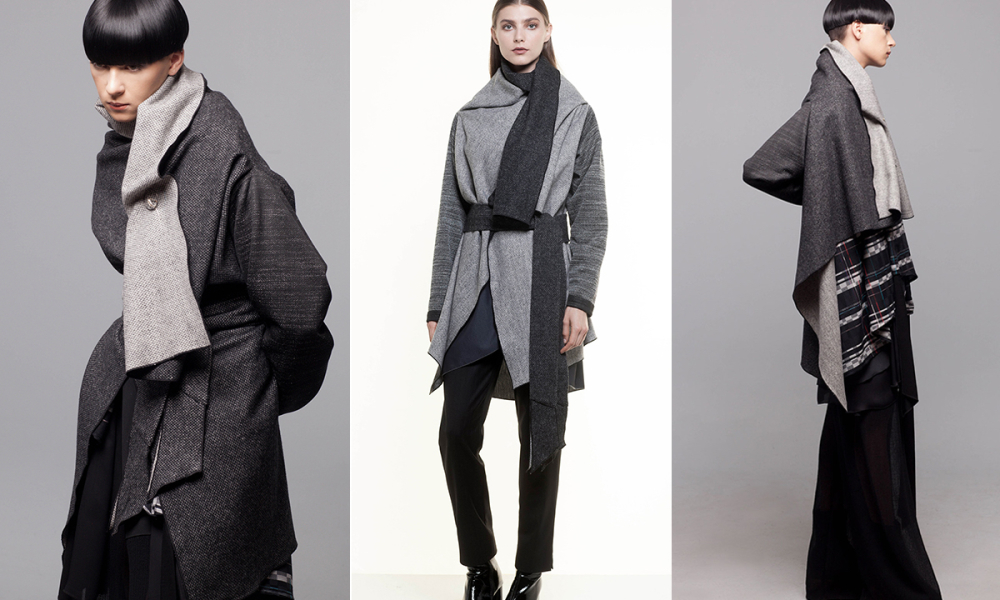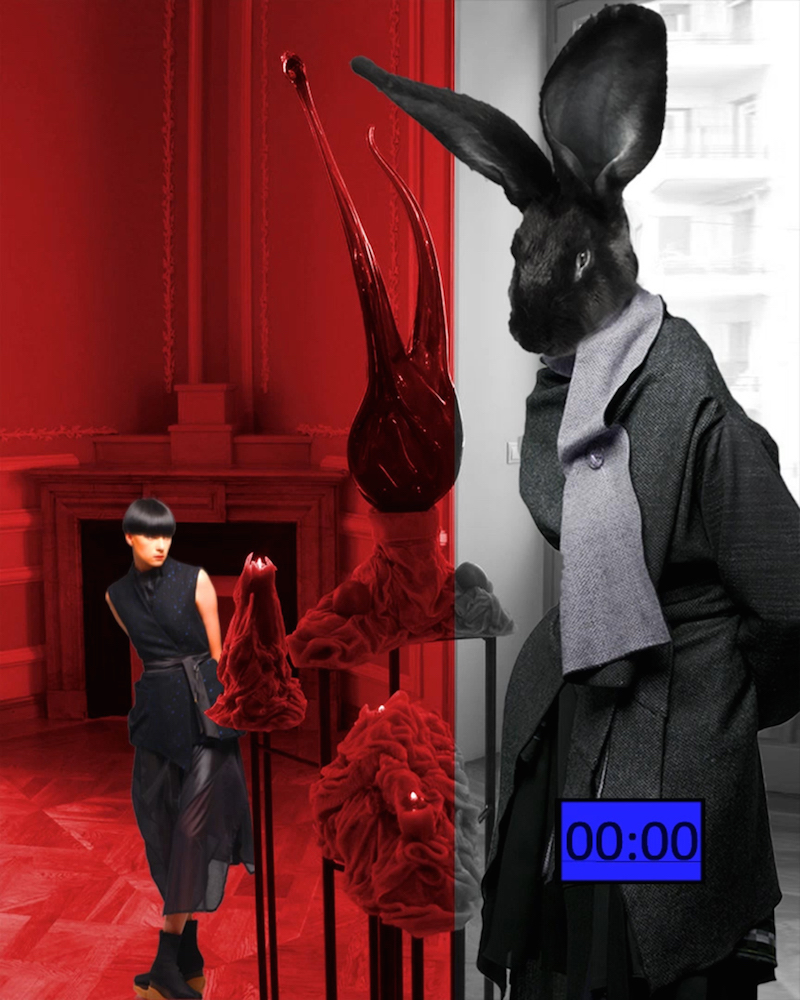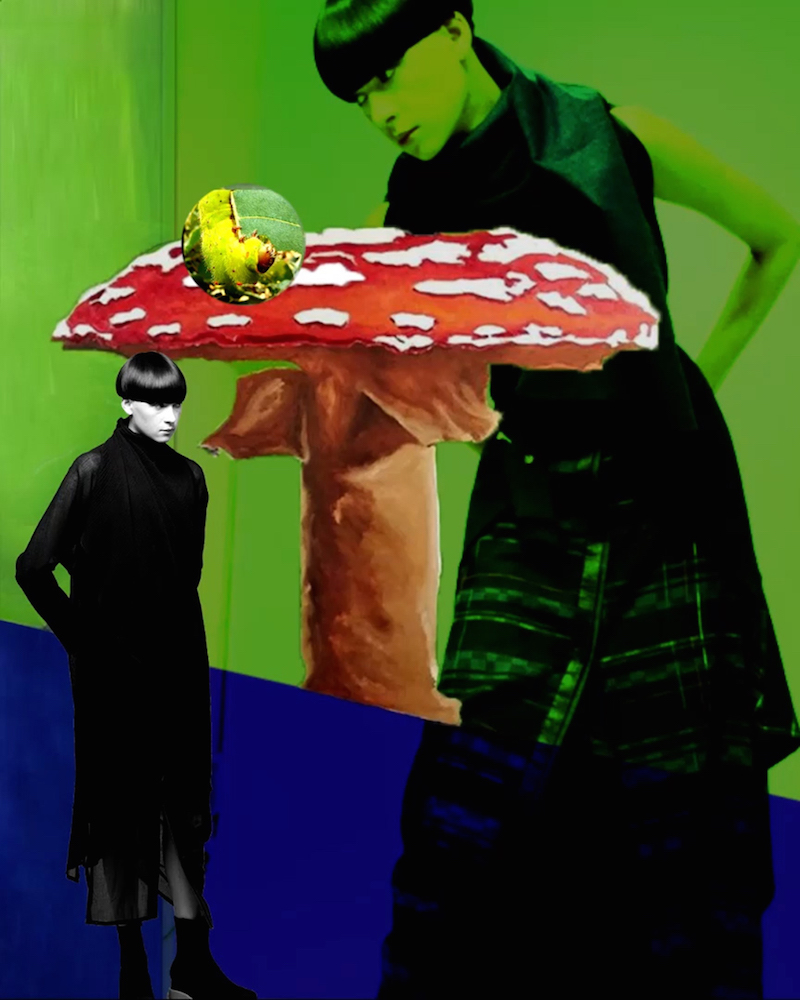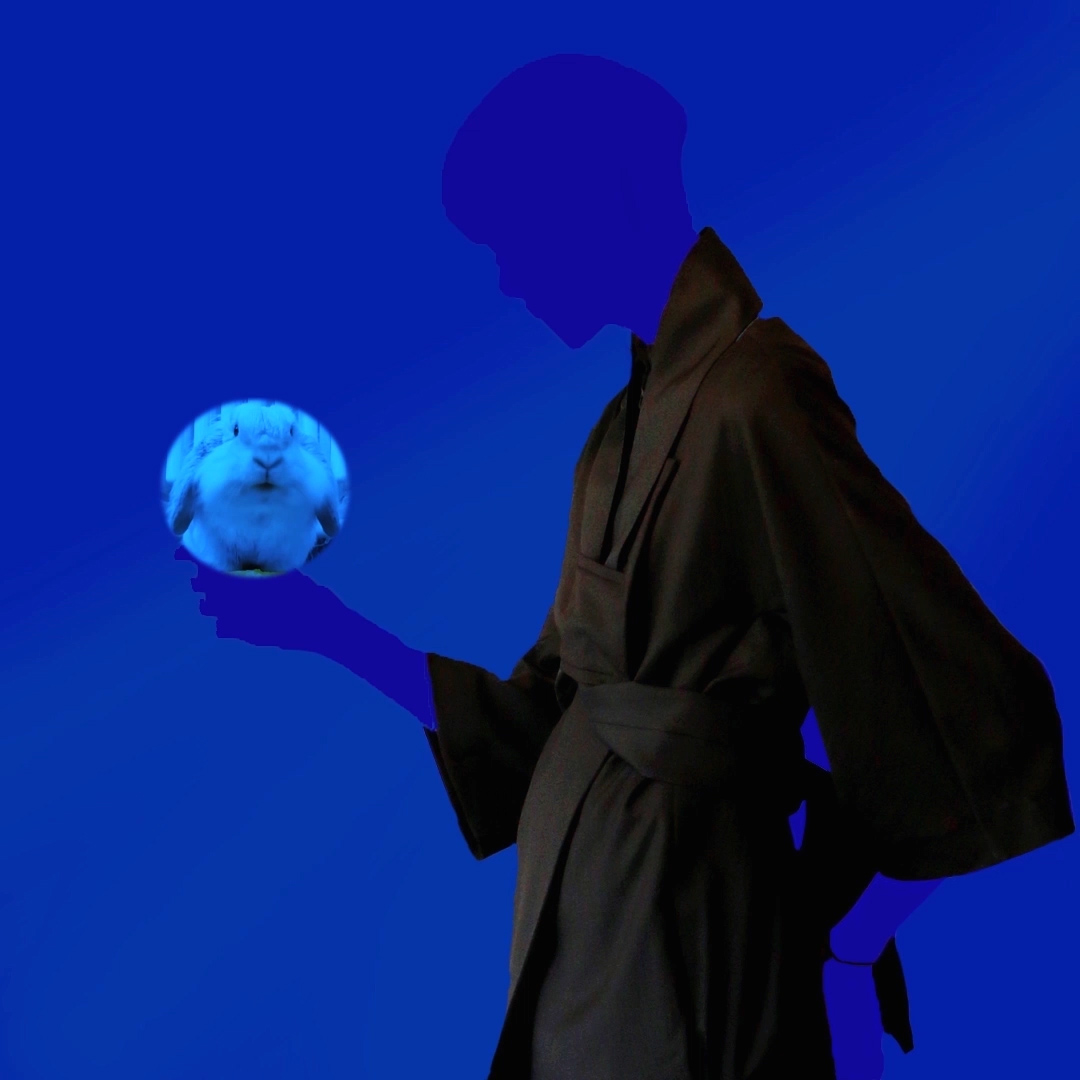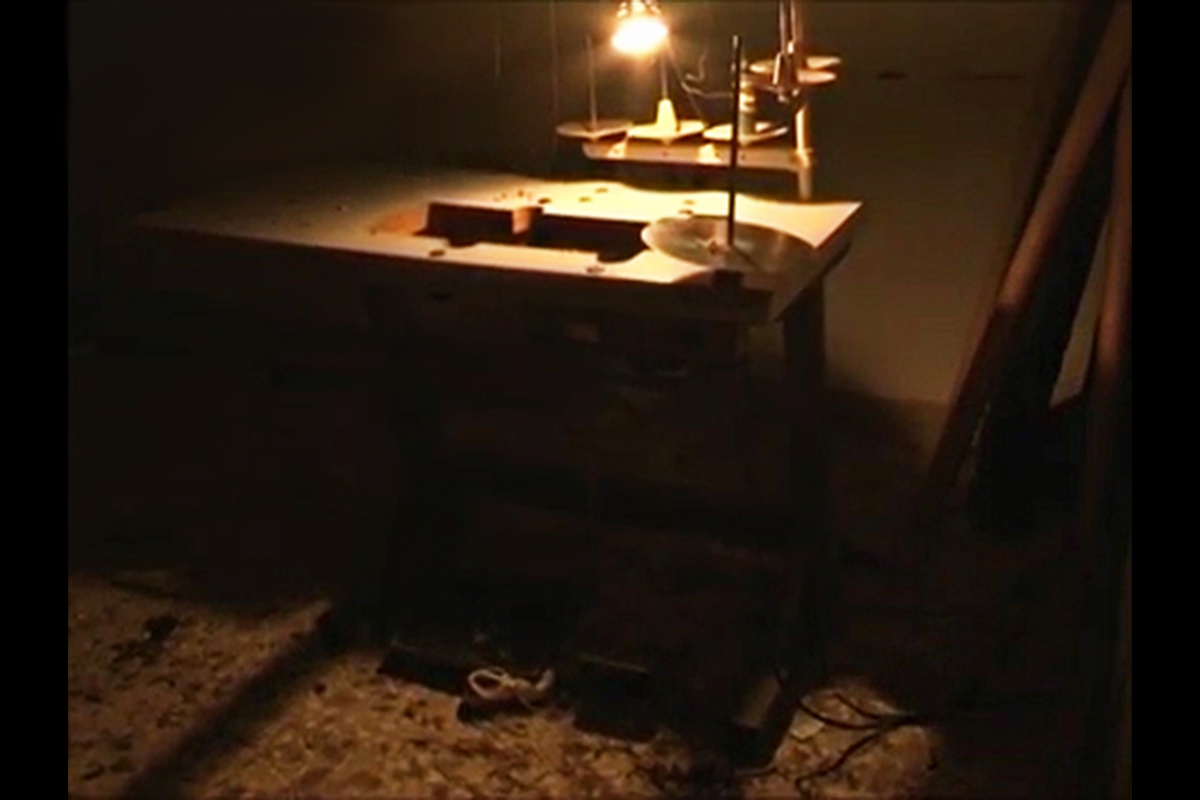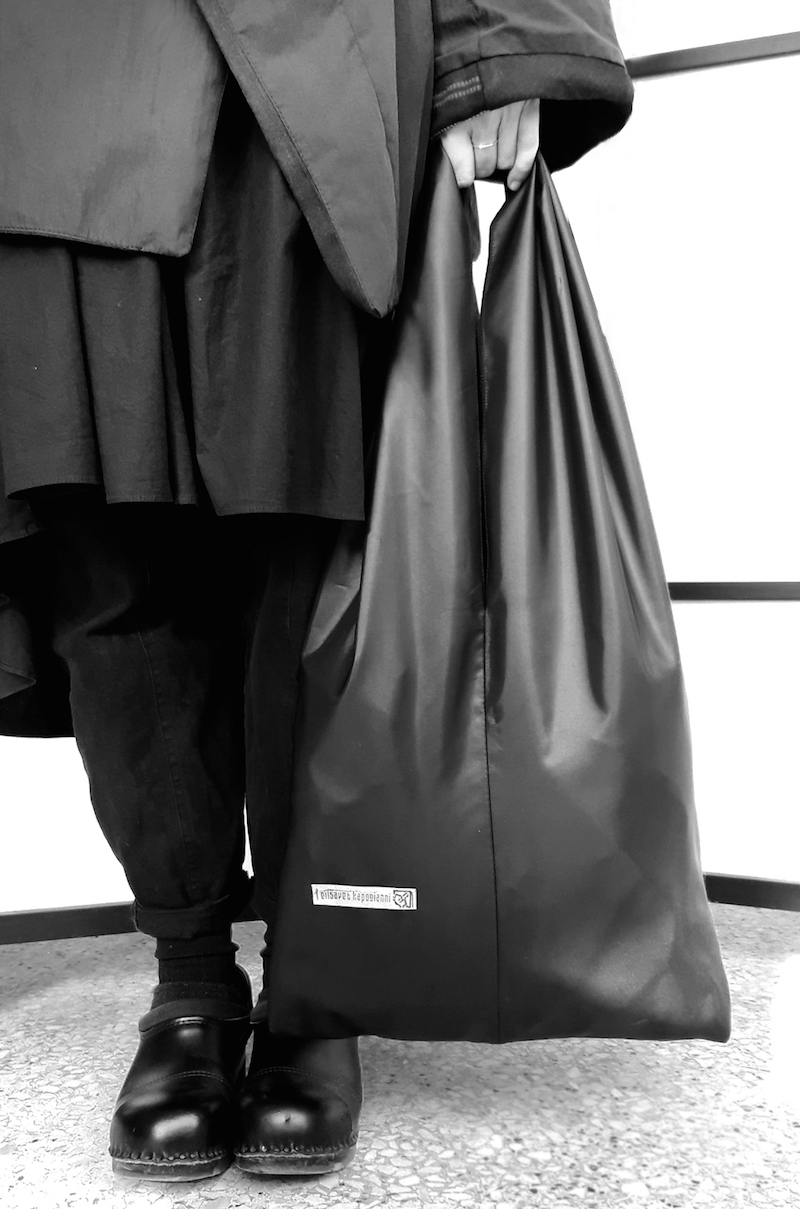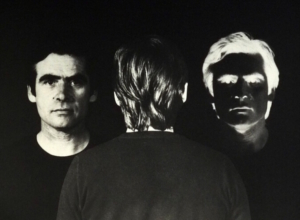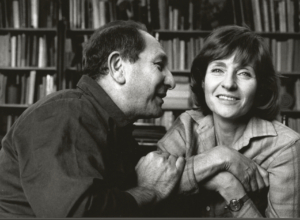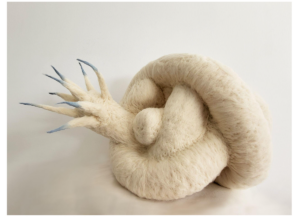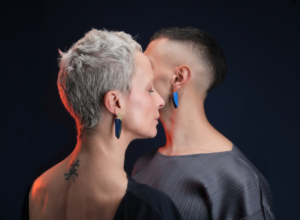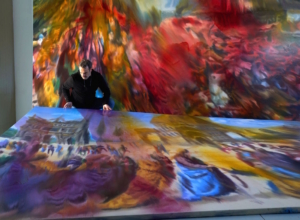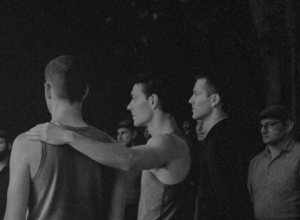Il potentissimo modello di relazione che la moda ha instaurato con il mercato, basato sull’evocazione, sull’immagine e sul sogno piuttosto che sui processi reali di produzione, è esattamente il contrario, come sottolinea Maria Luisa Frisa nel suo “Le forme della moda”, del messaggio che viene genericamente associato alla moda ecosostenibile, percepita come punitiva, brutta e assolutamente non glamour. Sebbene il mondo della moda non si sia ancora dimostrato particolarmente sensibile al nuovo paradigma della sostenibilità, almeno rispetto ad altri settori come quello dell’alimentazione, dell’automobile o dell’energia, la necessità di fare chiarezza sul significato di moda sostenibile ha prodotto negli ultimi anni ricerche, pubblicazioni e comportamenti virtuosi degni di nota. Ne parlo in questa intervista con la talentosa designer greca Elisavet Kapogianni.
It is undeniable that focusing on the evocative power that comes from images, rather than on the production process, fashion has established a very strong connection with the market. As Maria Luisa Frisa explains in her book “Le forme della moda”, dreaming through suggestions is not what we usually feel when we relate to sustainable fashion that is still perceived as punitive, ugly and absolutely unglamorous. The fashion industry has not been particularly sensitive to sustainability’s new paradigm so far – especially when compared to other assets such as food, automobiles or energy. Nevertheless, in recent years, the need to clarify the meaning of sustainable fashion has produced noteworthy studies and publications and virtuous behaviors. I had the pleasure of talking to the talented Athens-based fashion designer Elisavet Kapogianni on sustainability and creativity.
Elisavet Kapogianni, still from the video 'Slow down' by Vasilis Karouk
Francesca Interlenghi: Il valore della sostenibilità gioca un ruolo centrale nel tuo lavoro. “Rallenta, sii ancorato al tuo presente ma sostieni il futuro” è il tuo credo. Potresti approfondire un po’ il concetto di sostenibilità? Come traduci questo valore nel tuo abbigliamento?
Elisavet Kapogianni: Il processo di creazione/consumo dei capi di abbigliamento e la strada verso la sostenibilità sono concetti piuttosto complicati e laboriosi e richiedono grande riflessione. Sono temi che non possono essere indagati assecondando i ritmi frenetici del sistema moda e i sui capricci. E’ necessario rallentare, prendersi il tempo per ri-pensare alle cose. Serve un profondo radicamento in sé stessi, coscienza di sé e del mondo circostante. Non si tratta di essere auto indulgenti quanto piuttosto di proiettarsi verso il futuro in maniera ottimistica, immaginandone la bellezza e capendo quali possano essere le strategie per modellarlo. Ho intenzione di lavorare alla questione della sostenibilità senza ipocrisia. Il modo in cui approccio il design e la progettazione del prodotto – dall’acquisizione del tessuto alla spedizione del capo – è un percorso di prove e di errori che mirano a trovare un equilibrio tra vari parametri che non possono essere egualmente soddisfatti. Ogni volta che creo qualcosa non ambisco a cambiare il mondo quanto piuttosto a creare una versione migliore di ciò che ho fatto in precedenza. Il mio obiettivo è imparare sempre di più ed esplorare le modalità con cui si possono creare collezioni sempre più sensibili al tema della sostenibilità, godendo allo stesso tempo del processo di creazione.
Francesca Interlenghi: The value of sustainability plays a central role in your work. “Slow down, root to your presence but sustain the future” is your statement. Could you elaborate a bit on the notion of sustainability? How do you translate this value into your clothing?
Elisavet Kapogianni: The process of creating/consuming and the road to sustainability are both complicated enough and labor intensive, even if you merely refer to cognitive labor, so in my opinion it cannot be truly explored in hysterical rhythms trying to satisfy the whims of fashion. You have to slow down, take your time to re-think Equally, it cannot be really explored if you are not rooted in your presence, that is be aware of yourself and your surroundings, so you can focus and manage aspirations and shortcomings in any way you are able to. In all, it does not mean that you remain self-indulged, but include an optimistic projection of a beautiful collective future and what can you do to shape it. I explore sustainability without being sanctimonious about it. I feel that the way that I approach the design and product development from sourcing the fabric to shipping the garment is a journey of trials and errors aiming to strike a balance among various parameters that cannot be equally satisfied. Each time I create, I am not set to change the world, rather than create a better version of what I do. My goal is to learn more and explore more the ways we can create more sensible collections each time, but at the same time enjoying the process.
Francesca: Come definiresti il concetto di sostenibilità?
Elisavet: Sostenibilità è per me l’unione di etica ed estetica, una mentalità basata sul rispetto, il buon senso e l’ottimismo. È un obiettivo a cui tendere nel bilanciamento tra creatività individuale e tensione all’universale, caratteristica del mio lavoro che racchiude in sé tanto le mie ossessioni personali quanto le aspirazioni collettive. Si tratta di dedicare tempo a pensare e a investire in qualità piuttosto che in quantità. Il mio approccio alla slow fashion avviene attraverso piccoli, lenti miglioramenti nella progettazione, attraverso capi unici che non possono esser contestualizzati in una specifica stagione perché non assecondano la volubilità del sistema moda. Spesso si tratta solo di rimaneggiare proporzioni di capi creati in precedenza oppure aggiungere un solo elemento in più per dare vita a un guardaroba modulare e sostenibile. Molti dei mie vestiti infatti si trasformano e si indossano facilmente in vari modi: sono forme fluide che si adattano al possibile cambiamento del corpo di una donna garantendo comunque portabilità e bellezza. La stratificazione è un tema ricorrente nelle mie collezioni perché il mio obiettivo è creare abiti adatti a qualsiasi ora del giorno e a qualsiasi momento dell’anno, intercambiabili a seconda delle esigenze quotidiane e stagionali. Altro caposaldo del mio lavoro è la volontà di ridurre al minimo gli sprechi. Spesso adeguo il mio design per ridurre gli scarti in fase di taglio ottenendo talvolta forme inattese. Oppure utilizzo lotti molto piccoli di tessuti di qualità acquistati localmente o in Europa e lavoro con tecniche artigianali gli scarti dell’industria della pelle trasformandoli in dettagli funzionali. Di recente, grazie a campioni di tessuto e scarti di produzione, ho sviluppato un sacchetto a zero impatto ambientale per confezionare i nostri prodotti. Ciò che comunemente viene considerato scarto io lo considero materiale che può essere trasformato in qualcosa di bello e utile. Ad esempio, le etichette le ricavo da tagli di pelle che produco e stampo manualmente. Si può ottenere lo stesso risultato facendo maggiori investimenti nel lavoro manuale e nella creatività piuttosto che abusando delle risorse naturali.
Elisavet Kapogianni, still from the video 'No silk' by Vasilis Karouk
Francesca: How would you define sustainability?
Elisavet: Sustainability is for me ethics + aesthetics and it’s a mindset based on respect, common sense and optimism. Is an aim to balance my creativity and cosmic footprint, embracing both personal obsessions and collective aspirations. It’s all about taking your time to think and invest on quality and labor rather than quantity. I approach slow fashion through uncrushed design progress and steady development of signature pieces that you cannot really pin down to a particular season or fashion caprice. Often, I simply explore proportion of previous designs of my collection and give it an up to date take. I also aim to create items that are one garment too many, with which you can form a somewhat modular wardrobe, that can be translated in sustainable wardrobe. Many of my garments easily transformed and worn in more than one way (ie upside down /double fast). I am creating relaxed forms and sizing so it can be adapted to a woman’s possible change of her figure and still be wearable and beautiful. In addition, layering is recurring theme in my collections, so I aim to create pieces that are all day/all year around and you can use them interchangeably according to your daily or seasonal needs. My design and development also incorporates minimum waste attitudes. Often I adapt my original design to reduce waste in cutting and sometimes it results in unexpected shapes. The same attitude applies in by using small stock lot of quality fabrics sourced locally and from Europe, up-cycling our own material stock and off-cuts but also our industry’s waste. I use off cuts discarded from the leather industry and we update them with handcraft techniques and used them as functional details. Recently I developed a zero waste bag for packaging of our products from our own stock fabric samples and manufacturing waste. What others regard as waste I regard it as enduring material that can still be turned into something beautiful and functional. For example all labels are from leather off cuts that I manually produce and print. It seems more sensible to invest more in manual labor and creativity than to use more natural resources to produce something of the same function.
Francesca: E la qualità? Che ruolo le attribuisci in questo contesto?
Elisavet: Sostenibilità significa anche alta qualità, materiali durevoli, dettagli raffinati e lavorazioni artigianali. Associo la qualità anche alla consapevolezza. Fin dall’inizio, ho sempre aspirato a un nuovo concetto di lusso nella moda, ancorato alla sensibilità e all’empatia e svincolato dall’uso della pelle e della pelliccia. Per questa stagione, con la collezione A/I 19-20 Wonderland, ho rinunciato ad adoperare la seta e mi concentro soprattutto su fibre naturali e di qualità come cotone, lino, lana (e le loro miscele con fibre sintetiche) ma uso anche tessuti riciclati come il Tencel e Cupro che sono ugualmente resistenti e alternativi alla seta. La qualità di un capo non si limita però solo al materiale di cui è composto, ci vuole anche rispetto per le origini manifatturiere di un prodotto. Lavorando con Vexed Generation, ho capito che l’industria della moda glamour ha un suo lato oscuro. E’ stato allora che ho conosciuto la realtà delle felpe e lo sfruttamento dell manodopera, perciò ho maturato la convinzione che finché farò abiti nessun essere umano dovrà soffrire per causa mia. Ecco perché tutte le mie collezioni escono in tirature limitate e sono prodotte in Grecia da abili artigiani locali. Lavoro a stretto contatto con un team di eccellenti partner che garantiscono salari equi e non sfruttano il lavoro minorile.
Elisavet Kapogianni, still from the video 'No fur' by Vasilis Karouk
Francesca: And what about quality?
Elisavet: I assign the value of sustainability to our products using high quality, enduring materials, fine details and craftsmanship and make products that are here to last. I also associate quality with mindfulness. I aspire to a new fashion luxury that is anchored in sensibility and empathy and have refrained from the use of wild animal skin and fur since the establishment of my brand. This season I gave up using silk and I offer more cruelty free alternatives in Wonderland AW19/20 collection. I currently use mainly quality natural fibers like cotton, linen, wool (and their blends with man- made fibers), that are long-lasting, but also recycled fibers like Tencel and Cupro that are equally enduring and alternatives to silk. But the quality of a garment does not limit its self to its matter. I equally respect a product of its manufacturing origins. While working with Vexed Generation, I understood that the glamorous fashion industry has a dark side. It was back then when I got familiar with terms such as sweatshops and unfair labor, through the brand’s pursuit to create an international garment label that signified that it was not made under unfair labor conditions. Equally I embraced the idea that as long as I make garments no human being must suffer on my behalf. Therefore all my collections are produced in short runs and crafted locally in Greece by my skillful artisans. I work closely with a team of excellent partners who I respect, ensuring fair wages and no child labor.
Francesca: La tua ricerca estetica è il risultato di un mix di stimoli diversi e trae ispirazione dall’arte, dal design, dalla scienza e dalle tue ossessioni personali. Me ne puoi parlarne?
Elisavet: Mentre studiavo e vivevo nel Regno Unito, ho avuto la possibilità di relazionarmi con un gruppo di artisti che sperimentava diverse discipline in diversi contesti culturali. Questa esperienza ha accresciuto la mia creatività e definito il mio approccio estetico insegnandomi a guardare oltre il semplice perimetro di tessuto, forbici e tendenze. Sono anche una persona molto curiosa, un’attenta osservatrice attratta dalla scienza, la tecnologia, la storia, la cultura, il cinema, le arti: tutte fonti di ispirazione che traduco poi nella moda. Mi affascinano anche l’architettura e le sue correlazioni. Edifici e abiti sono entrambi strutture artificiali visualizzabili (perché illustrate) in disegni bidimensionali ma costruite in tre dimensioni con l’obiettivo di “ospitare” gli esseri viventi, evocare sentimenti di sicurezza e benessere e proiettare ideali di bellezza. Ho un debole per l’arte contemporanea in particolare perché attraverso essa si aprono nuovi scenari; condivido l’atelier con mio marito, pittore e video artista, quindi gli stimoli dell’arte mi arrivano quotidianamente. Amo il minimalismo giapponese e la sostenibilità del periodo Edo, quando ogni cosa veniva riciclata in modo ingegnoso. Il kimono, ad esempio, è uno dei temi ricorrenti delle mie collezioni. Mi affascina la scienza, il pensiero che conduce all’esplorazione e invenzione di nuovi materiali e tecniche. Io stessa attualmente sto sperimentando nuovi materiali che derivano da rifiuti di riciclaggio e cerco di capire come introdurli nel mio lavoro. Ho poi le mie ossessioni personali, per esempio mi incuriosisce il modo in cui vengono fatte le cose, la loro struttura e forma, le diverse combinazioni che ne variano magari il significato. Tutto è uno stimolo per me, anche le cose più banali come le emozioni suggerite dalle materie prime o dall’atmosfera di un particolare momento della giornata. Mi piace concentrarmi sui piccoli dettagli e ripensare cose semplici, renderle importanti e servirmene per creare all’infinito. Essere creativi nella moda non significa solo e sempre innovare.
Elisavet Kapogianni, Xyz outlet installation
Francesca: Your aesthetic research is the result of a mix of different stimuli and draws inspiration from art, design, science and personal obsession. Can you talk about that?
Elisavet: While studying and living in the UK I had the chance to interact within a strong creative hub from different artistic disciplines and cultural backgrounds. This experience defined me as a creative individual and establish my approach to aesthetic and taught me to looks outside a mere box of fabric, scissors and trends. I am also a very curious person, persistently observing and getting involved with science, technology, history, culture, film, arts to be inspired and re-energized with new ideas and decode it into fashion. I am inspired by architecture and I am fascinated by the correlations that shares with fashion. Buildings and garments are both manmade structures that are visualized (illustrated) in two dimensional drawings but constructed in 3 dimensions, with the aim to ‘house’ living beings, evoke feelings of security and wellbeing and project aspirations of beauty and status. I have a soft spot for fine arts, especially contemporary art, because through them I am opened up in fresh and new windows of perception and aesthetics. I share my atelier with my husband who is a painter and video artist,so the stimuli of art is daily for me.I am fascinated with the Japanese minimalism and the all-inclusive sustainability of the Japanese Edo period, when each and every thing was upcycled in ingenuous ways. The kimono, for example, is also a recurring theme of my collections.I am captivated by science, the imaginatively thinking it involves to explore and develop new materials and techniques. Currently I am absorbed into researching into new materials developed from upcycling waste and the ways I can introduce them into my work. I have my personal obsessions, like my curiosity of how things are made, their structure and form and how I can play around with them to change their meaning. I get provoked by even the simplest things like emotions evoked by raw materials themselves or the atmosphere in a particular part of a day. I enjoy focusing in small details and re-thinking simple things, make them relevant to myself and use them to create endlessly. Either way, being creative in fashion doesn’t only mean to constantly innovate.
Elisavet Kapogianni, zero waste bag
Francesca: Hai qualche progetto imminente?
Elisavet: Lavorare sul tema della sostenibilità è già un grande progetto di per sé, soprattutto perché opero su piccola scala con risorse limitate e in contesto finanziario, quello attuale, piuttosto ostile. Nel prossimo futuro vorrei sviluppare ulteriormente il concetto su cui si fonda la collezione Wonderland e introdurre nuovi materiali sostenibili che sto ancora sperimentando. Ho iniziato a guardare la moda anche attraverso l’immagine in movimento. Sto infatti lavorando a un progetto cinematografico per il brand insieme a mio marito (Vasilis Karouk), un artista che negli ultimi anni ha lavorato con la video arte indagando attraverso questo linguaggio il tema della sostenibilità. Una volta completato il fashion movie al quale stiamo lavorando, lci piacerebbe partecipare ai festival locali ma anche a quelli internazionali.
Francesca: Do you have any upcoming projects?
Elisavet: Exploring the path of sustainability is a huge project itself, especially because I operate in small scale with limited resources and within the current hostile financial environment. In my near future plans is to develop further the concept Wonderland and incorporate new sustainable materials that I am currently exploring. I am also currently exploring fashion through moving image. I am working on a film project for the brand with my husband (Vasilis Karouk), an artist who creates also himself video art series on the discourse of sustainability through art for the past few years. When completed the ambition is to be screened in the local but also international fashion film festival.
WONDERLAND campaign, is a series of audiovisual artwork created in collaboration with Greek artist Vasilis Karouk (@vpkarouk), through which we can talk creatively and with a sense of humor for the values and aesthetics of my brand. Currently seen only in Instagram
“I’ m late! I’ m late! for a very important date! ” said the White Rabbit Alice’s Adventures in wonderland
Save the date and don’t be late, cause fur free clothes are now here to stay.
We associate quality with mindfulness. We aspire to a new fashion luxury that is anchored in sensibility and empathy and have refrained from the use of wild animal skin and fur since the establishment of our brand.
“…but when you have to turn into a chrysalis…and then after that into a butterfly, I should think you’ll feel it a little queer, won’t you?’ said Alice
‘Not a bit,’ said the Caterpillar.
‘Well, perhaps your feelings may be different,’ said Alice; ‘all I know is, it would feel very queer to ME.’ Alice’s Adventures in wonderland
This season we gave up using silk and we offer cruelty free alternatives in our Wonderland AW19/20 collection
“The hurrier I go, the behinder I get”— White Rabbit, Alice’s Adventures in wonderland.
This is a time of the year when overwhelmingly encouraged to think fast and consume more.
On the other hand buying new clothes can be a necessity and it will never be completely out of fashion. Nevertheless, it can be a time to slow down, re-think of who made our clothes, reflect on our real needs and purchase high quality clothes that are made to last. (Thoughts on consumerism launched Black Friday)


